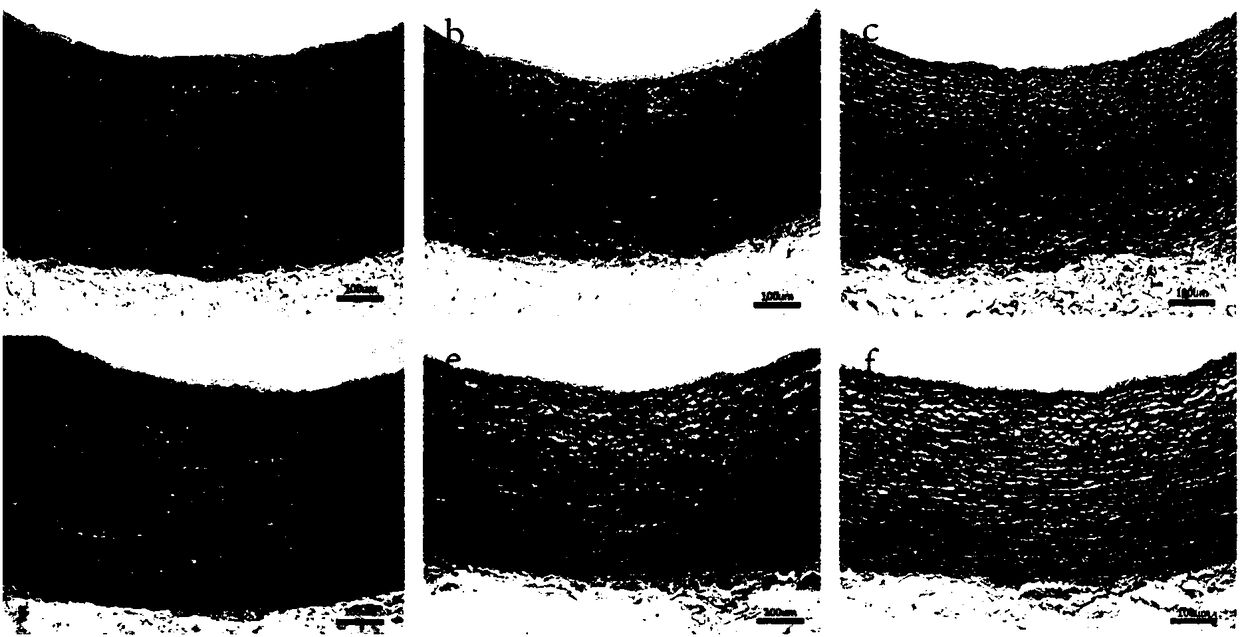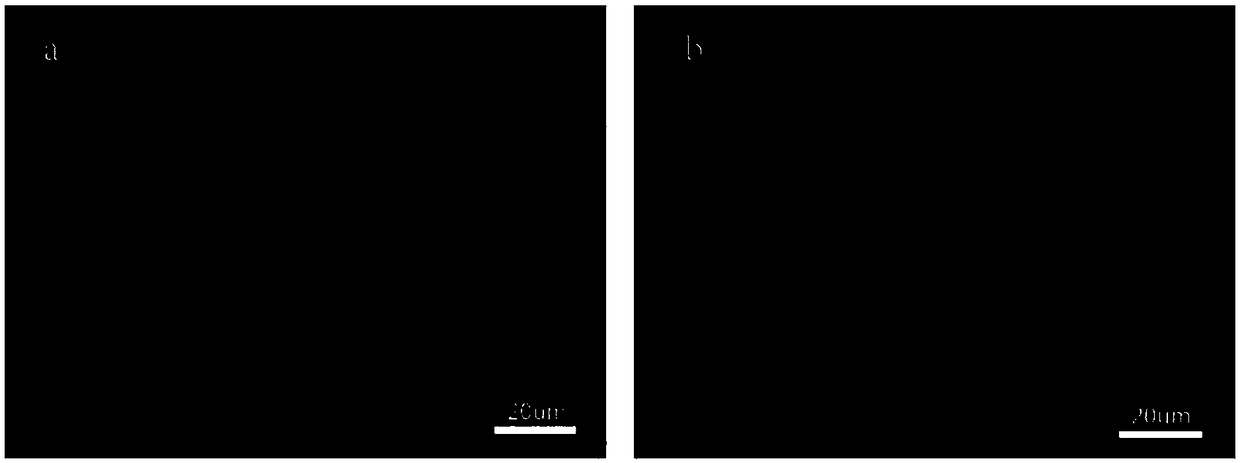Preparation method of biogenic small-aperture tissue engineering blood vessels
A tissue engineering and biologically derived technology, applied in tissue regeneration, medical science, prosthesis, etc., can solve the problems of occlusion, hyperplasia of organ cavity, destruction of biological characteristics of vascular matrix, etc., to avoid the residual of toxic substances and strengthen the decellularization effect. , to avoid the effect of degradation
- Summary
- Abstract
- Description
- Claims
- Application Information
AI Technical Summary
Problems solved by technology
Method used
Image
Examples
Embodiment 1
[0053] Example 1: Preparation of tissue engineered blood vessels
[0054] 1. Materials
[0055] Fresh animal blood vessels: fresh porcine carotid artery vessels (porcine iliac artery vessels can also be used)
[0056] 2. Method
[0057] (1) freeze-thaw
[0058] Place the fresh animal blood vessels in PBS buffer containing 0.1% EDTA, place them in a -80°C deep-low temperature refrigerator for 2 hours, and place them in a 37°C water bath for 20 minutes immediately after taking them out. Repeat the above operation twice, that is, perform a total of 3 freeze-thaw cycles;
[0059] (2) Remove the cell debris that fell off after freezing and thawing
[0060] The blood vessel material obtained in step (1) is placed in distilled water and fully rinsed at 4°C to remove detached cell residues;
[0061] (3) Detergent decellularization
[0062] The vascular material obtained in step (2) was soaked in Tris-HCl buffer containing 0.1% EDTA and 1% TritonX-100 and shaken at room temperatu...
Embodiment 2
[0096] Example 2: Preparation of tissue engineered blood vessels
[0097] 1. Materials
[0098] Fresh animal blood vessels: porcine carotid arteries or porcine iliac arteries
[0099] 2. Method
[0100] (1) freeze-thaw
[0101] Place fresh animal blood vessels in PBS buffer containing 0.02% EDTA, place them in a deep freezer at -80°C for 1 hour, and place them in a 37°C water bath for 10 minutes immediately after taking them out. Repeat the above operation once, that is, perform a total of 2 freeze-thaw cycles;
[0102] (2) Remove the cell debris that fell off after freezing and thawing
[0103] The blood vessel material obtained in step (1) is placed in distilled water and fully rinsed at 4°C to remove detached cell residues;
[0104] (3) Detergent decellularization
[0105] The vascular material obtained in step (2) was soaked in Tris-Hcl buffer containing 0.02% EDTA and 1% TritonX-100 and shaken at room temperature for 48 hours, and then fully washed with distilled wa...
Embodiment 3
[0108] Example 3: Preparation of tissue engineered blood vessels
[0109] 1. Materials
[0110] Fresh animal blood vessels: porcine iliac arteries or porcine carotid arteries
[0111] 2. Method
[0112] (1) freeze-thaw
[0113] Place fresh animal blood vessels in PBS buffer containing 0.2% EDTA, place them in a -80°C deep-low temperature refrigerator for 3 hours, and place them in a 37°C water bath for 30 minutes immediately after taking them out. Repeat the above operation 4 times, that is, a total of 5 freeze-thaw cycles;
[0114] (2) Remove the cell debris that fell off after freezing and thawing
[0115] The blood vessel material obtained in step (1) is placed in distilled water and fully rinsed at 4°C to remove detached cell residues;
[0116] (3) Detergent decellularization
[0117] The vascular material obtained in step (2) was soaked in Tris-Hcl buffer containing 0.2% EDTA and 1% TritonX-100 and shaken at room temperature for 12 hours, and then fully washed with ...
PUM
 Login to View More
Login to View More Abstract
Description
Claims
Application Information
 Login to View More
Login to View More - R&D
- Intellectual Property
- Life Sciences
- Materials
- Tech Scout
- Unparalleled Data Quality
- Higher Quality Content
- 60% Fewer Hallucinations
Browse by: Latest US Patents, China's latest patents, Technical Efficacy Thesaurus, Application Domain, Technology Topic, Popular Technical Reports.
© 2025 PatSnap. All rights reserved.Legal|Privacy policy|Modern Slavery Act Transparency Statement|Sitemap|About US| Contact US: help@patsnap.com



